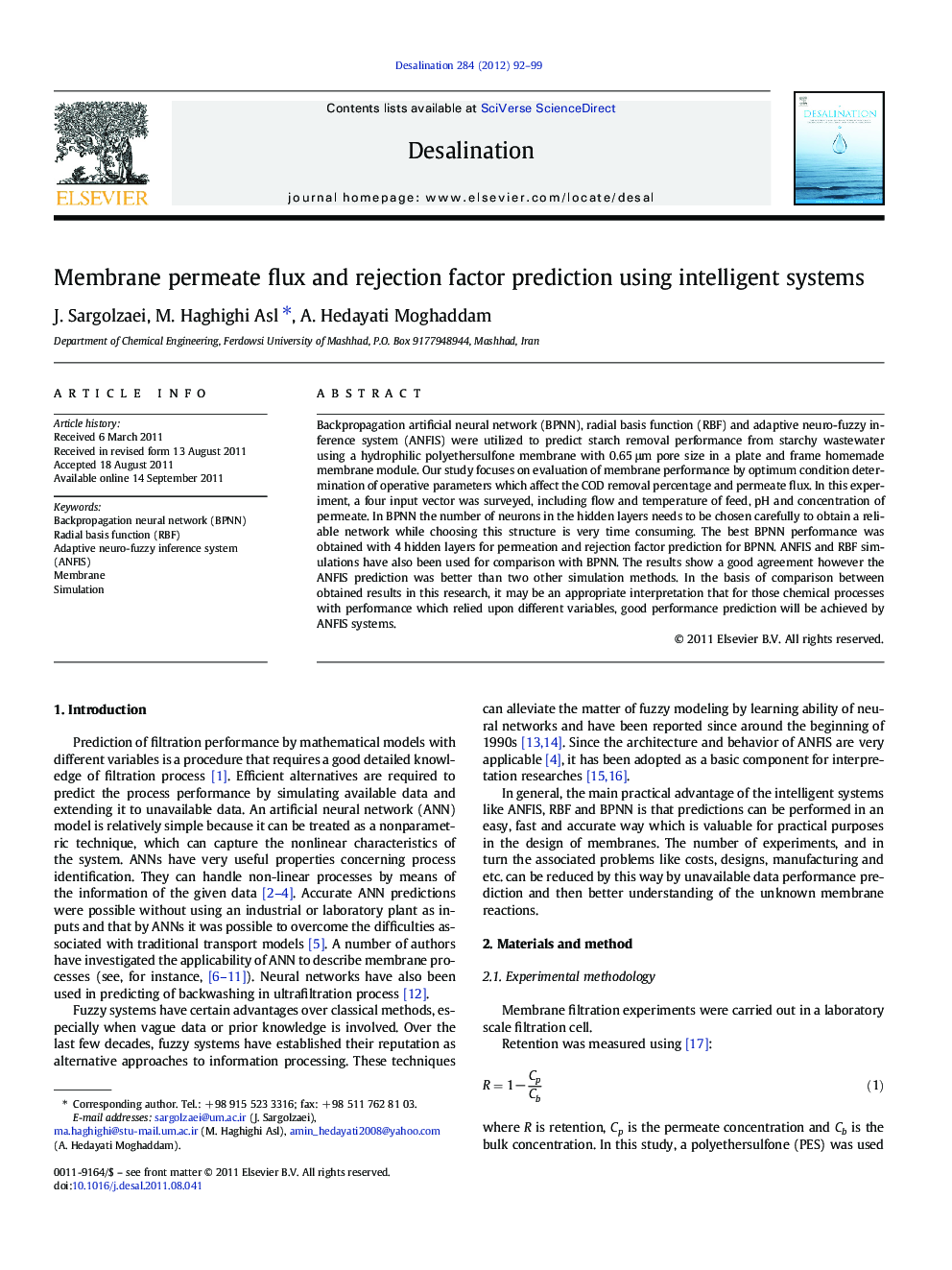| Article ID | Journal | Published Year | Pages | File Type |
|---|---|---|---|---|
| 624664 | Desalination | 2012 | 8 Pages |
Backpropagation artificial neural network (BPNN), radial basis function (RBF) and adaptive neuro-fuzzy inference system (ANFIS) were utilized to predict starch removal performance from starchy wastewater using a hydrophilic polyethersulfone membrane with 0.65 μm pore size in a plate and frame homemade membrane module. Our study focuses on evaluation of membrane performance by optimum condition determination of operative parameters which affect the COD removal percentage and permeate flux. In this experiment, a four input vector was surveyed, including flow and temperature of feed, pH and concentration of permeate. In BPNN the number of neurons in the hidden layers needs to be chosen carefully to obtain a reliable network while choosing this structure is very time consuming. The best BPNN performance was obtained with 4 hidden layers for permeation and rejection factor prediction for BPNN. ANFIS and RBF simulations have also been used for comparison with BPNN. The results show a good agreement however the ANFIS prediction was better than two other simulation methods. In the basis of comparison between obtained results in this research, it may be an appropriate interpretation that for those chemical processes with performance which relied upon different variables, good performance prediction will be achieved by ANFIS systems.
► Intelligent systems are used to predict the performance of the membrane process. ► We focus on performance evaluation by optimizing rejection factor and permeate flux. ► We overcome the complexity of input and output dependency by different structures. ► Intelligent system results show good adaption however the ANFIS fit more suitable.
